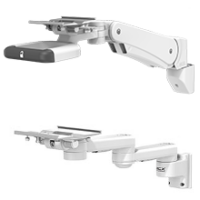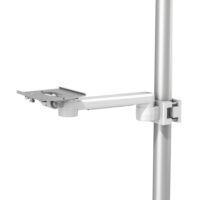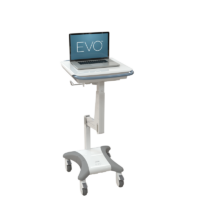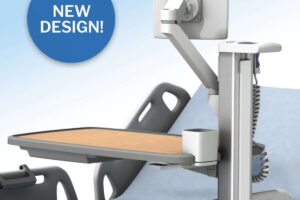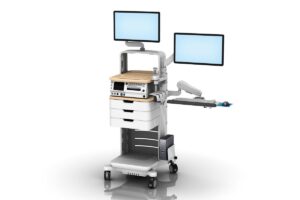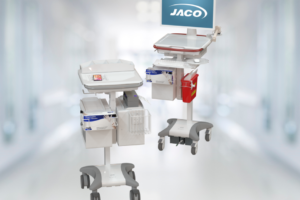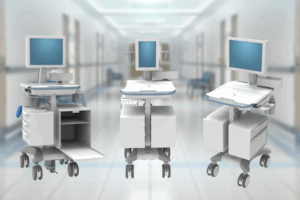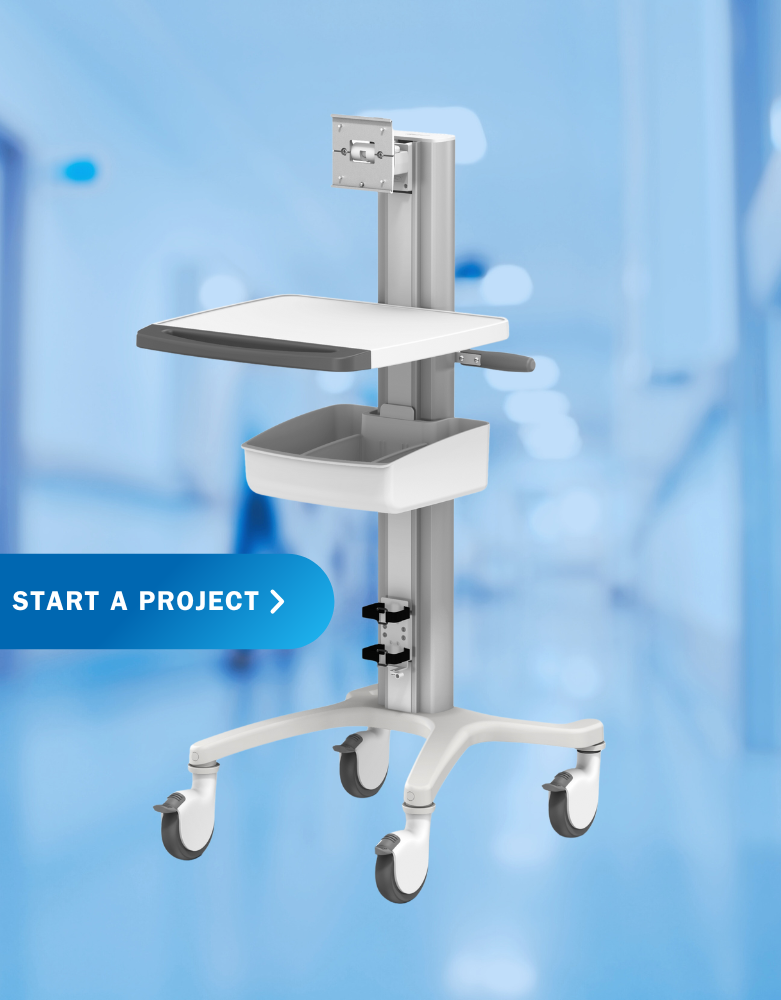
-
Solutions
Care Area Solutions
Standardize GCX mounting solutions throughout your healthcare facility.
IT and EMR Solutions
Mounting solutions for Information Technology and Electronic Medical Records equipment.
Mounting solutions based on your mounting location.
Medical Device Solutions
Mounting solutions designed specifically for your medical and patient monitoring devices.
-
Products
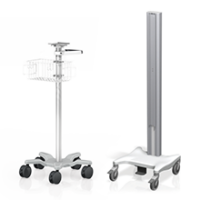
Carts and Roll Stands
Variable Height
Fixed Height
Accessories
- 10 x 25 mm Rails
- Barcode Scanner Mounts
- Baskets and Bins
- Cable Management
- Camera Mounts
- Channels
- CPU Mounts
- Data Capture Device Mounts
- Down Posts
- Drawers
- Gas Cylinder Mounts
- Gel Bottle Mount
- Handles
- Keyboard Trays and Plates
- Medical-Grade Power Strips
- Mountable Tablet Enclosures
- PolyQuip® Post and I.V. Bag Hanger Mounts
- Power Supply Mounts
- Probe Cup Mount
- Speaker Mount
- Tablet Integration
- Trays
- UPS Mounts
- USB Charging Modules
- VESA Adapter Plates
-
OEM Services
Mounting solutions for medical device OEM partners range from off-the-shelf to complete custom products.
Approach
Modalities
- Ventilation
- Ultrasound
- Patient Monitoring
- Telemedicine
- Surgical Navigation
- ECG Solutions
- Other Modalities
Our Expertise
-
Support
-
About GCX
Lilitab™ is now a part of GCX! Learn More
Don’t Let Bad Ergonomics Distract from Providing Great Care
By GCX Corporation on October 26, 2018 in Ergonomics
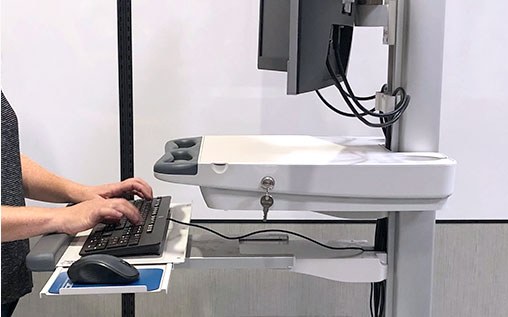
We recently partnered with a San Francisco hospital to install GCX wall mounts for their electronic medical records. As part of the process, staff provided us a lengthy list of questions to ensure our mounts met their ergonomics standards.
Hospital officials take ergonomics seriously, and for good reason. The potential cost of repetitive stress injuries among clinicians– and subsequent lost productivity – is a major concern. Additionally, patients need convenient and safe access to portable devices, such as tablets, during a hospitalization.
One size does not fit all
Ergonomics is a prime consideration in all GCX designs and product lines and has been for decades. Our entire customer base is, and always has been, medical communities; therefore, our products are designed specifically for healthcare settings. As such, we’ve witnessed the changes in physical spaces and workflows that make ergonomics more important than ever.
Most medical manufacturers are familiar with Dreyfuss’s Measure of Man and Woman charts that show a range of body dimensions, such as a 95th percentile tall man vs. a 5th percentile short woman. From those charts, product designers and engineers calculate the optimal keyboard and screen height for a computer workstation and a theoretical height adjustment range to cover the user population.
But what happens when that theory meets the practical reality of a hospital room?
‘Adjusting’ to today’s hospital rooms
In a typical patient room, you may expect to have a dozen different users daily, each using the workstation for a short amount of time, sitting or standing. They most likely won’t spend more than a couple seconds adjusting the workstation to fit them. In this case, we recommend that a hospital focus its users on making a single, quick height adjustment of the workstation.
Conversely, the space between a user’s eye level to their ideal keyboard height varies only a few inches across a population – yet it is important to achieve a neutral wrist angle to help prevent injuries. Rather than make a workstation adjustment for this spacing, a facility may be better off keeping it simple and fixing this dimension for an average population. Otherwise users at height extremes will likely adjust equipment optimally for nobody but them. (Note that in an office environment with a single workstation dedicated to a single user, and longer duration use, there is a bigger payoff for optimizing multiple fine dimensional details of a workstation.)
Positioning users for optimal interactions
Furniture and typical use positions matter as well. Say a workstation must accommodate a “seated” user. Those human-factor charts will specify a theoretical office chair height and base workstation dimensions. But in the OR, an anesthesiologist typically sits at a slightly higher stool that allows her to look down on the OR table and see the patient’s head. In an ED or exam room, a doctor may sit down on a short rolling stool that’s below the height of a typical office chair. This is where ergonomists can add a lot of value in a hospital.
This also is where companies like GCX excel. Our product development team understands the role ergonomics now plays, and our expanding product lines anticipate both today’s and tomorrow’s healthcare ergonomics.
We go into hospital rooms and interact with clinicians and ergonomists so that we are sure we provide the best solution to keep users safe and productive. We understand that ergonomics is a dynamic, not static, requirement – and one we will continually meet.
Recent Blog Posts
- Patient Engagement July 15, 2025
- Understanding Patient Experience June 4, 2025
- Preventive Maintenance for Medical Devices April 15, 2025
- Hospital Asset Tracking Systems: Integration Maximizes Value March 27, 2025
- Bring IT December 13, 2023
Blog Categories
- Anesthesia
- Asset Tracking & Preventative Maintenance
- Case Studies
- Custom Solutions
- EMR Hardware
- Endoscopy
- Ergonomics
- Fetal Monitoring
- Headwalls
- HIMSS
- Medical Computer Carts
- Medical Devices
- Medical Mounting Solutions
- Mobile Devices
- On-Site Services
- Patient Engagement Table
- Patient Experience
- Tablets
- VHM-PL





















